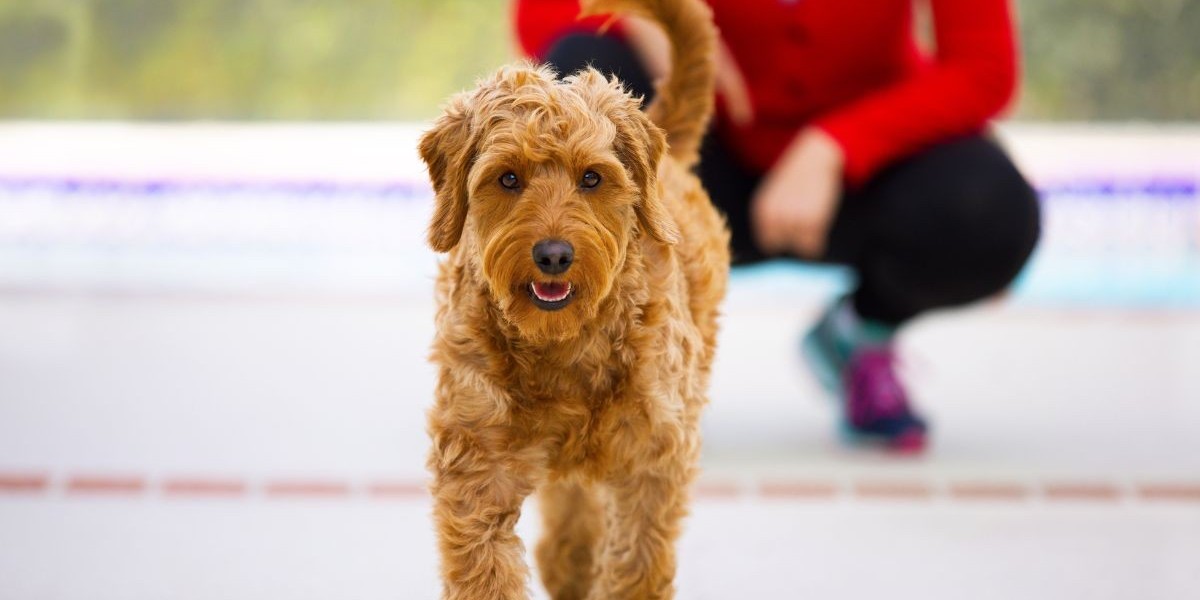Bringing a new dog into your life—especially a bright, eager-to-please doodle—comes with a lot of joy and a bit of responsibility. Teaching five core commands early gives your dog safety, structure, and the tools to live happily in a human world. Below you’ll find a practical, step-by-step guide to the first five commands every dog should know, why they matter, how to teach them using gentle, proven methods, and a short real-world case study from Arizona trainers that shows these techniques in action.
Why these five commands matter
The core five (sit, stay, come/recall, down, and leave it) give owners control in everyday situations: stopping a dog before it darts into traffic, getting attention at the dog park, or preventing your dog from swallowing something dangerous. The American Kennel Club highlights these basic cues as foundational skills every puppy should learn because they build safety and set the stage for more advanced work.
A reliable recall and a solid “leave it” are particularly life-saving. Training them early lowers stress for both pet and owner and improves the human–dog bond.
The first five commands — one at a time
Below are concise, repeatable methods you can use at home. Use positive reinforcement (treats, praise, play) and keep sessions short and fun.
1) Sit — the cornerstone of calm
Why it helps: Sit gives you a way to interrupt excitement and focus attention.
How to teach it:
Hold a small, tasty treat near your dog’s nose.
Slowly lift the treat over their head so their bottom naturally lowers.
As their hips touch the ground say “Sit,” then reward immediately and praise.
Repeat 3–5 times per session, multiple sessions per day until they offer sit without the lure.
Common mistake: Repeating the cue without rewarding success — always mark and reward correct responses.
2) Stay — control with a release word
Why it helps: Stay teaches patience and impulse control—useful at doors, near roads, and during vet visits.
How to teach it:
Ask for a sit, then hold an open palm toward your dog and say “Stay.”
Take one step back; if the dog stays even for one second, step forward and reward + say your release word (e.g., “OK”).
Gradually increase distance and duration, always ending on a positive note.
Tip: If your dog breaks the stay, reset and shorten the duration — build success slowly. The AKC recommends teaching a clear release cue as part of stay training.
3) Come (Recall) — your dog’s safety net
Why it helps: A reliable recall prevents dangerous situations and gives freedom under safe conditions.
How to teach it:
Begin indoors with minimal distractions. Use a high-value treat and a cheerful voice.
Back away a short distance and call the dog’s name plus “Come.”
When the dog comes, reward immediately with a treat and enthusiasm. Practice with family members so the cue becomes universal.
Gradually increase distance and add distractions—always end with rewards so coming to you is rewarding, not punitive.
Evidence shows consistent positive reinforcement produces strong, lasting recall.
4) Down — a calm, controlled position
Why it helps: Down is useful for settling, vet visits, and controlling jumping or barking.
How to teach it:
From a sit, hold a treat in your hand near the dog’s nose and lower it slowly to the floor between their paws.
As they follow and lie down, say “Down” and reward immediately.
If your dog struggles, use a long-lasting chew as a lure so they can settle and be rewarded for staying down.
5) Leave it — prevent accidents
Why it helps: “Leave it” stops the dog from grabbing dangerous objects or forbidden food.
How to teach it:
Show a low-value treat in your closed fist; present it to the dog and say “Leave it.”
When the dog stops investigating or pulls back, reward from the other hand with a different treat.
Progress to placing the treat on the floor, covering it with your hand, and releasing only when the dog looks away or waits for your cue.
Teaching “leave it” reduces emergency vet visits and keeps walks less stressful. American Humane and other welfare groups stress the real-world value of leave-it for safety.
Training method—how to structure sessions
Choose positive reinforcement as your primary tool: reward wanted behaviors with treats, play, or praise. Short sessions are key—dogs (especially puppies) have short attention spans. Keep sessions to 5–10 minutes, two to four times per day, and always end on success. Veterinary and training resources consistently recommend these short, frequent bursts rather than long, tiring sessions.
Other practical tips:
Use the same verbal cues and hand signals consistently.
Train in different locations to proof commands against distractions.
Fade food rewards over time, replacing treats with praise or play.
Training a Goldendoodle: what to expect
Goldendoodles are intelligent, social, and usually eager to please—traits that make them quick learners. They also need enough mental and physical exercise (often 30–60 minutes per day depending on size) to stay balanced. When you’re looking at golden doodles for sale In Arizona, prioritize breeders or rescues that start early socialization and basic cue work; pups raised with handling and structure are easier to train.
Real-world case study: Arizona trainers in action
The Arizona Humane Society runs accessible group classes and private lessons focused on basic obedience and behavior; instructors emphasize positive reinforcement, short sessions, and real-life proofing. Owners who complete these programs typically report better recall and fewer problem behaviors, because trainers teach owners how to make the right behavior more rewarding than the wrong one. This program provides a practical example of community-driven, results-focused training in Arizona.
Takeaway: community training classes are an affordable, reliable, and proven way to jumpstart obedience—especially if you adopted locally or bought a puppy from a breeder in Arizona who recommends follow-up classes.
Two-week beginner practice plan (sample)
Week 1:
Days 1–3: Teach Sit and short Sit–Stay combos (5-minute sessions, 3×/day).
Days 4–7: Add Come in low-distraction areas (3×/day, always with tasty rewards).
Week 2:
Days 8–10: Teach Down; reinforce Sit/Stay and Come in slightly different locations.
Days 11–14: Introduce Leave It and start proofing recall with mild distractions.
Keep daily notes: what worked, when your dog improved, and what still needs practice.
Troubleshooting common problems
Dog ignores recall: stop chasing. Use high-value rewards and practice with a long line so you can reward success safely.
Dog breaks stay: shorten the duration and increase gradually. Reward small wins.
Training plateaus: change rewards (toy, play) or move to a quieter environment to rebuild focus.
FAQs
Q: How soon should I start training my puppy?
A: Start the moment you bring the puppy home—basic cues and socialization in the first 8–16 weeks are invaluable.
Q: How long until my dog is reliable off-leash?
A: That depends on the dog and environment. A well-trained dog may be reliable in safe, controlled areas after months of consistent practice, but always use caution until recall is proven in many settings.
Q: What if my dog is food-motivated or not motivated by treats?
A: Use the motivator that works—some dogs prefer play, tug, or a favorite toy. Training should be results-driven and user-friendly.
Q: Should I use treats forever?
A: No—use them to establish behavior, then gradually fade to intermittent rewards and praise.
Conclusion
Teaching the first five commands—sit, stay, come, down, and leave it—gives your dog the foundation for safety, good manners, and more advanced learning. Use short, positive sessions, be consistent with cues, and proof behaviors in different places. If you’re looking for golden doodles for sale In Arizona, Doodling Pups, LLC provides well-socialized puppies raised with early training to help you get started. You can also tap into community classes, such as those offered by the Arizona Humane Society, to build on that foundation and set your dog up for lifelong success.
































